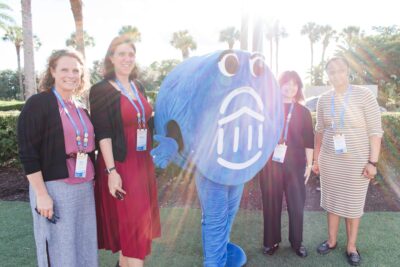Virtual student services are here to stay
Virtual student services are here to stay
Colleges and universities had no choice but to quickly adopt virtual operations during the pandemic. However, the fast turnaround caused many institutions to overlook the virtual user experience for student services. In some cases, colleges and universities did not see as much student engagement with services as they expected; in other cases, students engaged with much-needed services but were frustrated with the quality.
Students appreciate—and now expect—the flexibility that virtual services provide, but these experiences don’t always live up to students’ expectations. In fact, when our researchers analyzed over 130 student newspapers from around the country, we found that poor quality of online experiences has driven the widely-publicized student discontent.
A user experience perspective ensures high-quality virtual student services
User experience (UX) research explores users’ holistic interactions with a technology or service. The approach takes into account not only the product itself, but also the context of the user when assessing the quality of a product. Simply put, taking a user experience approach to virtual programming can help colleges meet the quality standards that today’s students have for online experiences.
UX principles can help colleges and universities understand how students live their lives and how services can be designed around student needs. With these principles in mind, higher ed leaders can minimize service delivery issues and barriers to service usage to increase the ROI of services as they’re brought out of the pandemic era and into the future.
The nuts and bolts of student user experience
User experience research tells us that services need to be accessible, findable, and usable, among other principles.
Accessible
Accessible services are easy to access for all students, regardless of ability, environment, or student background. Services should be developed with universal design principles in mind, meaning they should be created for use by any and all people. Without accessibility some students won’t be able to benefit from the services you work so hard to provide.
Example: Not every student has reliable access to technology like a computer or webcam. In order to remain accessible, advising or other one-on-one appointments should be available by phone.
Findable
Services are findable when students can access them in a quick and intuitive manner. Every additional step that a student must take to access a service is an additional barrier. When students can’t find a service quickly, they often stop looking and are left with unaddressed challenges and questions.
Example: Students don’t always understand on their own which support service will best suit their needs. Institutions should house all virtual support services in a centralized hub so that students know exactly where to go when they need assistance.
Usable
A usable virtual service is easily navigated and intuitive with minimal friction during use. Once a student has accessed a service, platforms need to meet functionality standards that will encourage student use and save students time and effort. When services don’t meet usability standards, students won’t continue to access the service.
Example: Some institutions require multiple steps for making an appointment for a virtual services, like requiring that students email an advisor or call an office. Students should be able to make an appointment directly from a service’s website without having to go through too many additional steps.
Case study: Why it’s worth it to invest in the user experience
One institution has already seen the benefits of bringing a user experience perspective to their virtual counseling efforts. A liberal arts college acknowledged the increase in student mental health concerns brought on by the pandemic, isolation, and the switch to remote instruction. In response, they began offering virtual counseling appointments.
Initially, few students signed up for virtual counseling. Instead of seeing this as a sign of low demand, the college asked whether the user experience was the problem. Most of their students were living in campus residence halls with a roommate and no access to a private space. There was nowhere for them to speak privately to their therapist.
The institution took the students’ real-world environment into account and offered empty rooms in the counseling center for virtual counseling, adopting a sanitation protocol to keep the space safe. After providing a private location, counseling appointments started to increase. For this institution, a UX approach has helped expand access by removing a major barrier to receiving care.
Learn how to develop student-centered well-being support
Institutions cannot meet the high demand for mental health and well-being support through counseling alone. Institutions must invest in holistic student wellness support beyond counseling services.
How our Virtual Student Services Website Audit can help
Our Virtual Student Services Website Audit will help EAB partners bring their virtual services out of the pandemic era and into a more hybrid future. After an EAB researcher completes the audit for your chosen service, your institution will receive a final report with prioritized, concrete recommendations to improve quality, increase accessibility, and maximize user satisfaction.
More Blogs

EAB Wrapped 2025: A year of reckoning—and reinvention—in higher ed

Four signs it’s time to break up with your student CRM
